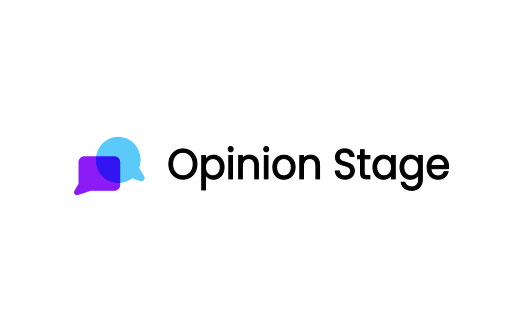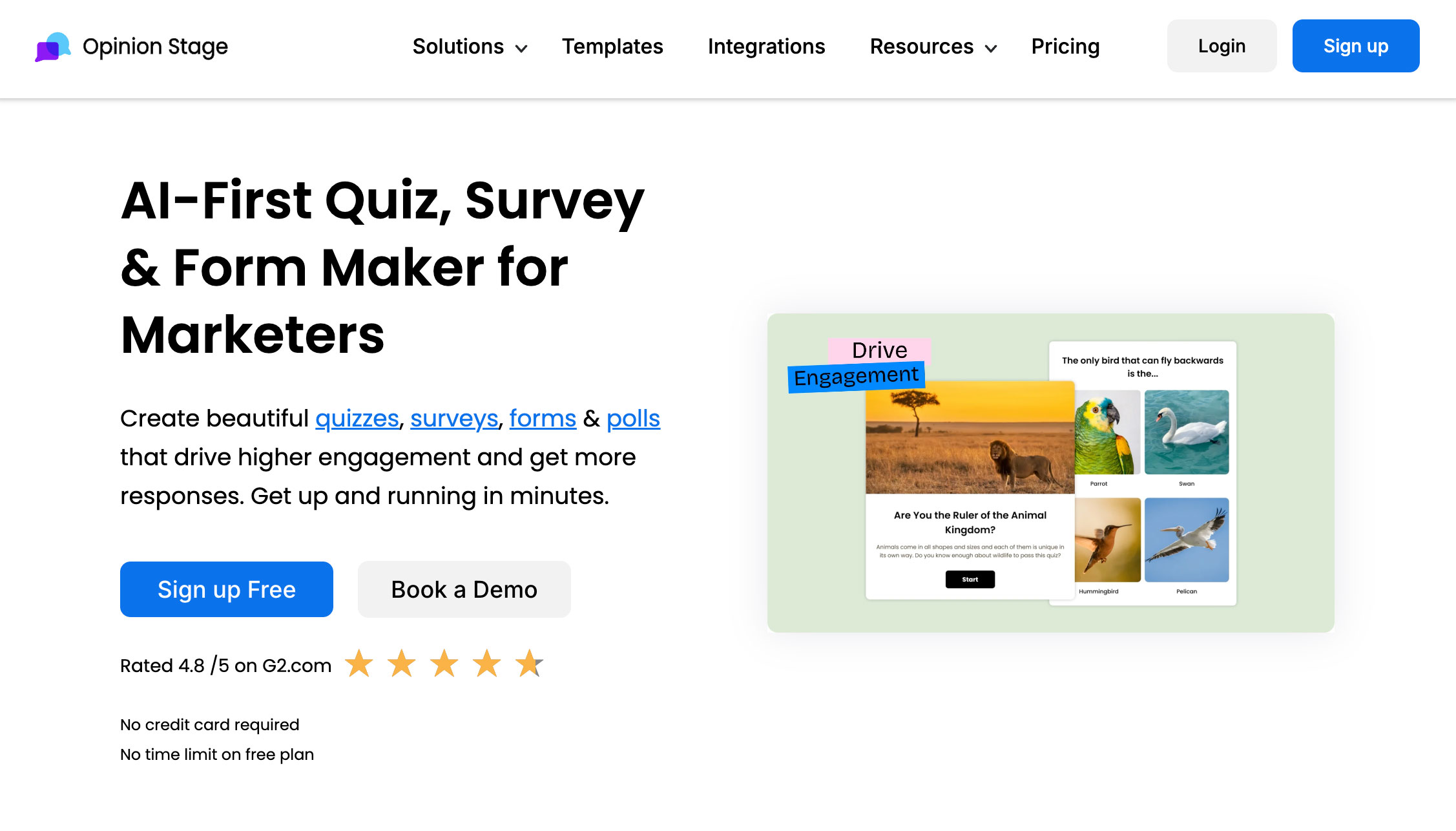TL;DR
When Opinion Stage decided to redesign their core quiz widget, they used Balsamiq to align quickly, explore different ideas, and get feedback early. The result was a smoother design and development process, faster collaboration, and a 30% increase in form submissions (a core goal).
At a glance
- Customer: Opinion Stage
- Industry: Technology & Software
- Use case: UI/UX redesign, product design
- Company size: Startup
- Key result: +30% submission rate from a product redesign

Meet Opinion Stage
Opinion Stage is an interactive content platform that helps marketers engage audiences with tools like quizzes, surveys, polls, and forms. Their team is fully remote, globally distributed, and supports 100,000+ customers in 190 countries.
CEO and founder Assaf Parag brings deep product and engineering experience, including two successful exits to Microsoft. He leads the product with a pragmatic, user-first mindset.

Lots of great ideas, but no shared picture
Opinion Stage's product is all about interactions and visuals. Their quiz and poll widgets need to look and work beautifully across devices, content types, and use cases.
But visual alignment across different teams and time zones isn’t easy, even with years of practice.
Each team brought a different lens—product, marketing, voice of the customer—but struggled to understand each other. Which means they struggled to get to a shared vision.
They tried skipping wireframes, jumping straight into Figma, even sketching by hand. Nothing worked well.
“Every time we skip wireframing, we regret it. Misunderstandings slow us down. But when I open Balsamiq—even mid-call—I can get my point across in two minutes.”
This comes in handy when working on features-of-consequence.
Clarity came first and results followed
When it came time to redesign one of their most important user-facing features (a dynamic quiz widget) Assaf knew better than to start in a high-fidelity tool.
He opened Balsamiq.
In just a few wireframes, he mapped out variations: desktop vs. mobile, image-heavy vs. minimal. The team, including his product designer, could instantly spot edge cases, align on structure, and move faster without getting distracted by color choices or code.
Plus, they could more easily incorporate user research.
“We get a lot of feedback from our customers,” Assaf shared. “Everyone wants something slightly different in how the quiz or poll shows up. Before jumping into the design, we have to explore every variation. Balsamiq is how we do that efficiently.”
What previously took months now took hours. And with this widget redesign in particular, Balsamiq helped them settle on an experience that led to a 30% increase in submission rates—a huge win in their conversion-focused world.

How Opinion Stage uses Balsamiq
- They start every new feature or improvement in Balsamiq: Before jumping into design or development, they wireframe high-level concepts to explore multiple directions.
- They iterate on wireframes based on internal and customer feedback: Wireframes live alongside final designs and evolve as ideas are refined.
- They rely on pre-made UI components to save time: Balsamiq’s built-in elements make it fast to mock up real ideas without drawing everything from scratch.
- They lean into comments, sticky notes, and annotations: Especially useful for async communication and documenting design rationale/tech specs.
- They integrate Balsamiq into their workflow with Linear (project management) and Figma (final design): Balsamiq bridges the early ideation and alignment phase before work gets scoped or styled.
The unskippable step in their product workflow
For Opinion Stage, Balsamiq isn’t just a wireframing tool—it’s the foundation of faster collaboration and better decisions.
It empowers the whole team to:
- Explore multiple directions before committing to code
- Align across roles and time zones
- Move faster, with fewer revisions
- Ship improvements that directly impact business outcomes
- Skip AI-generated slop (and focus on what users really need)
“Balsamiq is where every new feature starts, helping us move fast without skipping the thinking. It reduces complexity and makes sure we’re all on the same page.”
